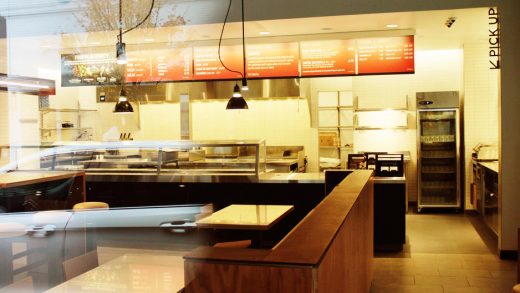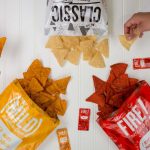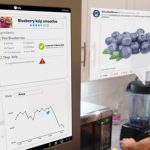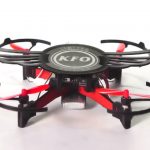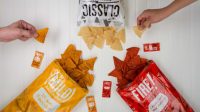Is It Safe To Eat At Chipotle Now?
Is it now safe to eat at Chipotle? After a series of food-safety incidents that began in the latter half of 2015, including outbreaks related to E. coli, norovirus, and salmonella, once loyal customers of the Mexican-inspired restaurant chain still have their doubts.
Throughout my research for our new feature on Chipotle, which charts the company’s internal struggles as it attempts to revive sales and consumer trust, I encountered countless numbers of people who wondered whether they could return to eating the restaurant’s food without worry of getting sick. This lingering concern can be seen in the company’s financial performance: Chipotle lost nearly a third of its sales after the food-safety crisis. Morgan Stanley surveyed customers in January 2016, in the immediate aftermath of Chipotle’s E. coli outbreaks and before the CDC closed its investigation, and found that just 41% of customers considered the chain a safe place to eat. That percentage ticked up in a subsequent study in June but not enough to resemble anything close to a full recovery. “When 50-some-odd people contract E. coli, and you realize that you were responsible for that, it really—shooooooo,” says Chipotle co-CEO Steve Ells, deeply exhaling. “Justifiably, people really question our trust. You lose that trust. For how long? We’re working really, really hard to get that trust back.”
Multiple industry experts tell me that Chipotle did not take food safety seriously enough or invest sufficient resources into quality assurance (QA). “When this [outbreak] first broke, the leadership at Chipotle, and I include Steve and [co-CEO] Monty [Moran], were completely sideswiped and didn’t know what the hell they were doing,” says one source familiar with Chipotle’s food-safety measures. “They had not really considered food safety at the level that they should have.”
Making Safety A Higher Priority
Before its E. coli incidents, a slew of sources tell me that the food safety and QA team overseeing the company’s entire supply chain included just four people, a low number for a chain of Chipotle’s scale and complexity. The company also split its safety teams, which some suggest created arbitrary divisions of responsibility within the organization. Heidi Wederquist, then Chipotle’s director of QA and food safety, oversaw supply-chain issues, but had little visibility into restaurant operations. Conversely, Tim Spong, who knew Moran in college and served as outside counsel for Chipotle before joining the company, managed safety, security, and risk at the restaurant level. “There is no way a team that small could properly manage all the food coming into that system,” says one former analyst at the company, who now works for a chain much smaller than Chipotle but with a QA team that’s twice its size. Chipotle spokesperson Chris Arnold disputes the visibility claims but confirms the rest, adding that the team was “strengthened” with additional hires after February 2016 and that the two groups have now been merged under Spong’s leadership. (Additionally, Jason Von Rohr, Chipotle’s executive director of supply chain, who was responsible for sourcing all of Chipotle’s ingredients, departed shortly after the E. coli outbreaks. Multiple sources indicate he had been planning to leave Chipotle and his departure was not a result of the outbreaks. He has since joined Amazon.)
Originally, Chipotle followed the guidance of food-safety scientist Mansour Samadpour, who runs the Seattle-based consultancy IEH Laboratories. He’d initially focused the company’s food-safety program on a mix of supply-chain testing and what are called “interventions” or “kill steps,” which work to eliminate pathogens from ingredients. For example, he introduced blanching produce to Chipotle, a kill step whereby Chipotle workers put lemons, limes, onions, avocados, and jalapeños into 185-degree water for five seconds before preparing them for customers.
When Chipotle hired James Marsden in February 2016 to be its director of food safety, he shifted the company to adopt more of these interventions, while winding down Samadpour’s testing system. He expanded the company’s blanching system, for example, to include bell peppers.
One of Marsden’s first acts was to create an ordered list of the riskiest ingredients on the restaurant’s menu. At the top of his list? Chipotle’s beef. Though there likely wasn’t one smoking gun that caused the outbreaks, in terms of particular ingredients, sources indicate Chipotle had narrowed its investigation to a select few items, including onions, cilantro, and beef. Cross-contamination was likely, but because the company’s E. coli outbreaks were limited to around 60 infected people, some food-safety sources suggest it was more than likely Chipotle’s beef was the original culprit that carried the E. coli, since it is a cooked item (unlike, say, cilantro), which may have reduced how widespread the outbreak could have been.
Whatever the case, Marsden decided to move the preparation of beef off-site to the company’s central kitchens, where workers precook or precut certain ingredients and sanitize them before shipping them off to individual restaurants. For steak, this involves cooking the meat by heating it in a sealed bag in a water bath at 133 degrees for around seven hours, so it becomes rare or medium rare. Once it is shipped to individual restaurants, crew workers sear the steak and reheat it to 145 degrees.
Similarly, for Chipotle’s newest menu item, chorizo, Marsden added a new pasteurization method called “high-hydrostatic pressure processing,” or HPP. This entails sterilizing the chorizo, at other off-site facilities, by blasting it with 87,000 pounds of water pressure for three minutes. Marsden says the HPP practice has long been used for “things like sliced turkey breast, prepared salads, usually foods that are in the ready-to-eat category.”
What complicates Chipotle’s safety story is that it is trying to strike a balance between its brand promise of fresh ingredients and in-store preparation, and its new one to be the safest fast-food place to eat. Although the company considered precooking its chicken at its central kitchens, too, it decided that it was too much of a logistical and financial challenge given how much poultry Chipotle serves. (Chicken constitutes 55% of its restaurant sales.) So crew workers are still handling raw chicken at its stores. Likewise, the company, which briefly moved the preparation and sanitation of lettuce to its central kitchens after the outbreaks, has since returned heads of romaine to its stores. How can it do this without risking another outbreak? For the lettuce at least, Chris Arnold, the Chipotle spokesperson, says the company has introduced a new “multi-step washing process” to reduce the risk of pathogens. Marsden boasted to me how Chipotle’s lettuce is safer now because it implemented what’s called “harvest testing,” meaning that it is tested in the field before being shipped to suppliers. But this is a baseline standard in the industry; the company was already doing harvest testing before the crisis. Marsden has also rolled out more stringent in-restaurant safety protocols, including more worker and restaurant audits and inspections.
Marsden has also unveiled his own testing system, to replace the solution initially implemented by Samadpour, the outside consultant from IEH Laboratories (who has since stopped working with Chipotle). This new system centers on “routinely” verifying the efficacy of Chipotle’s intervention requirements. Rather than having suppliers take and test more frequent samples of raw beef, for example, they can now test at far fewer intervals because the meat is precooked; they’re primarily doing this to ensure that kill steps, such as the sous-vide process of cooking steak, are working properly.
The company has suggested that it is now “doing more testing than we have ever done,” as Arnold tells me. Upfront, this new testing system requires resource-intensive validation studies, to ensure that the entire system is functioning correctly. But after these studies are performed, the company’s food will undergo substantially less food testing than it was under Samadpour. As with Samadpour’s testing program, there are complicated pros and cons to Marsden’s system, but as one neutral food-safety observer says, “If you’re in a courtroom and you listen to both sides of the argument, it’s hard to say that anyone is 100% correct. It’s all wrapped up in a lot of academic infighting and politics.”
This infighting is not purely academic. According to four sources familiar with the situation, Heidi Wederquist, Chipotle’s director of QA and food safety, disagreed with the direction of the company’s program. She has since departed Chipotle to join Samadpour’s IEH Laboratories. Her second in command, Chipotle’s former QA manager, followed her to IEH as well. (Arnold says he cannot comment on the reason for Wederquist’s departure. Wederquist did not respond to multiple requests for comment on this matter.)
So Is It Safe To Eat At Chipotle?
Certainly it’s safer than before. But following the outbreaks, Steve Ells, Chipotle’s founder and co-CEO, indicated to the public that the company would soon be 10 to 15 years ahead of the restaurant industry in terms of food safety. The program Marsden developed, centered on interventions, is a strong system, industry experts say, but it’s not exactly revolutionary. Kill steps are common in the restaurant industry, as is the type of testing Marsden adopted. If anything, this new food-safety system has raised questions about how fresh Chipotle’s food remains today.
The efficacy of Chipotle’s food-safety system is still left, to an extent, up to its crew workers, who are expected to properly wash items such as its lettuce; properly blanch much of its produce; properly handle and cook raw chicken; and properly follow in-restaurant hygiene protocols, such as hand washing, temperature logs, and other food audits. These 60,000 crew workers make an average of $10 an hour and the average Chipotle restaurant sees its headcount turn over at least once a year.
For that reason alone, as the company has acknowledged, Chipotle can never be fully certain that another outbreak won’t occur, even as its safety measures have substantially improved since before the crisis. “We can be as near certain as possible,” co-CEO Monty Moran says. “But the food-safety guys will tell you you can never be 100%.”
Related Video: From Crises to Commercials
Fast Company , Read Full Story
(76)

